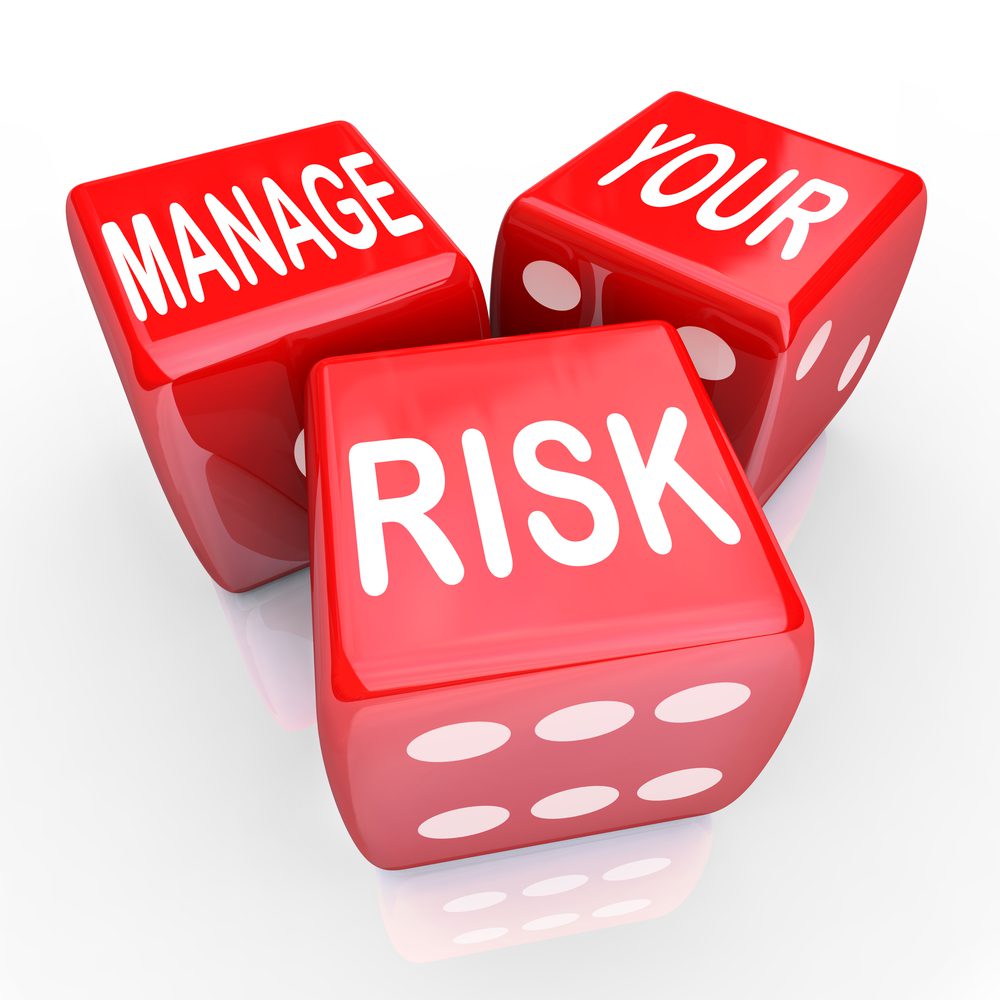Protect Your Workers and Business with WHS Management Systems and Auditing Guidelines in Australia
Workplace Health and Safety (WHS) management systems are critical for the welfare of employees and the overall success of an organization. These systems ensure that all workplace hazards are identified, assessed, and controlled to prevent accidents or injuries.
In Australia, there are well-established guidelines for WHS management systems that organizations must comply with. The WHS management system guidelines in Australia aim to provide a framework for organizations to manage their workplace risks effectively. Compliance with these guidelines is crucial for businesses, as failing to do so can result in costly fines, legal action, and damage to reputation.
The National Audit Tool (NAT) is the primary auditing tool used by regulators to assess compliance with these guidelines. Understanding the requirements of the NAT is essential for organizations seeking to maintain their WHS obligations and protect their employees’ safety.
This article will explore the key elements of these guidelines as well as auditing procedures to ensure compliance. This article will provide valuable insights into how businesses can implement effective WHS management systems and prepare for audits according to Australian standards.
Importance Of Workplace Health And Safety
- Risk assessments are essential in maintaining workplace health and safety, as they identify potential hazards and allow businesses to plan accordingly.
- Australian workplace regulations, such as the Australian WHS Management System and WHS Auditing Guidelines, provide a framework to ensure all areas of the workplace are compliant with health and safety standards.
- By following this framework, businesses can ensure that they are fully compliant with the relevant regulations and can provide a safe working environment for their employees.
- Implementing comprehensive risk assessments and adhering to workplace regulations are essential in creating and sustaining a healthy and safe workplace.
Risk Assessment
It is crucial for organizations to conduct risk assessments as part of their WHS management systems.
Risk assessment is an essential step in identifying potential safety risks and hazards within the workplace.
It involves identifying potential hazards, assessing the likelihood and severity of harm, and determining appropriate control measures to manage or eliminate these risks.
In Australia, risk management is a critical aspect of occupational health and safety (OHS).
Employers are required by law to conduct regular risk assessments to ensure that their workplace is safe for employees.
The Australian government provides guidelines on how to conduct risk assessments effectively.
These guidelines include identifying hazards, evaluating risks, implementing control measures, and monitoring and reviewing the effectiveness of these measures regularly.
By conducting thorough risk assessments, organizations can minimize the likelihood of accidents or injuries occurring in the workplace and create a safer working environment for their employees.
Workplace Regulations
In addition to conducting risk assessments, organizations must also comply with workplace regulations to ensure the safety and health of their employees. These regulations are put in place by governing bodies such as Safe Work Australia, and failure to comply can result in legal consequences.
Compliance with these regulations involves implementing WHS management systems encompassing policies, procedures, and practices to reduce safety risks and provide a healthy work environment. Employers must also conduct regular audits to ensure that their workplace is compliant with these guidelines.
Auditing guidelines provide organizations with a framework for assessing their compliance with workplace regulations. The purpose of an audit is to identify non-compliance issues and develop strategies for addressing these issues effectively.
Additionally, due diligence is essential in ensuring that employers take all reasonable steps to prevent accidents or injuries from occurring in the workplace. By complying with workplace regulations and conducting regular audits, organizations can demonstrate their commitment to promoting workplace health and safety while minimizing the risks associated with non-compliance.
Legal Requirements For Whs In Australia
WHS legislation in Australia is primarily encompassed by the Work Health and Safety Act 2011 (Cth) and its associated regulations.
This legislation imposes certain obligations on employers to ensure a safe and healthy workplace environment.
Compliance with these obligations requires employers to implement and maintain effective WHS management systems and to audit their effectiveness regularly.
ISO Consultants Australia can provide guidance on how to implement, maintain and audit WHS management systems in line with legal requirements.
WHS Legislation
The implementation of a Work Health and Safety (WHS) management system is crucial for any business operating in Australia. This system ensures that the workplace is safe and healthy for employees, visitors, and contractors. Moreover, it provides a framework for managing safety risks effectively.
One of the most critical components of WHS management systems is compliance with WHS legislation in Australia. WHS legislation sets out legal requirements for businesses to ensure the health and safety of workers and others who may be affected by their work activities.
These requirements aim to prevent accidents, injuries, illnesses, and fatalities in the workplace. Therefore, businesses must understand their legal duties under WHS legislation and implement appropriate measures to manage risks effectively.
Auditing guidelines are also available to assist businesses in assessing their compliance with WHS legislation and identifying areas for improvement in their management systems. By complying with these guidelines, businesses can ensure that they meet legal obligations while providing a safe workplace for all.
Compliance Obligations
Compliance with legal requirements for workplace health and safety in Australia is a vital aspect of any organization’s operations.
A key element of achieving compliance is the implementation of effective WHS management systems. These systems provide an organized framework for managing safety risks and ensuring that the workplace is safe and healthy for all employees, visitors, and contractors.
Compliance obligations under WHS legislation in Australia set out legal duties that businesses must fulfil to prevent accidents, injuries, illnesses, and fatalities in the workplace.
Auditing is an essential tool for assessing compliance with WHS legislation and identifying areas where improvements can be made in management systems. Businesses can use audit guidelines to evaluate their WHS management systems, identify any non-compliances, and develop corrective actions to address them.
By meeting compliance obligations under WHS legislation through effective management systems and regular auditing practices, organizations can ensure a safe work environment while also avoiding costly legal penalties.
Elements Of Effective WHS Management Systems
Effective WHS management systems (WHSMS) are essential for organizations to promote workplace health and safety. These systems provide a framework for managing risks, hazards, and incidents in the workplace.
The elements of effective WHSMS include:
- Leadership commitment
- Employee participation
- Risk management processes
- Communication and consultation
- Training and Education
- Continual improvement
Leadership commitment is crucial in ensuring that the organization’s policies and procedures are aligned with its objectives. It involves providing resources to support the implementation of WHSMS, setting measurable goals and targets, and regularly reviewing performance against these targets.
Employee participation ensures that workers have an opportunity to provide input into the development of WHS policies and procedures. Risk management processes involve identifying hazards, assessing risks, implementing controls to manage those risks, and monitoring their effectiveness.
Communication and consultation ensure that all stakeholders are aware of their responsibilities regarding workplace health and safety. Training and education enable workers to understand how to work safely while continually improving their knowledge about workplace hazards.
By adopting these elements of effective WHSMS, organizations can significantly reduce work-related injuries or illnesses while promoting a safe working environment for all employees.
In summary, effective WHS management systems play a vital role in promoting workplace health and safety by providing a framework for managing risks in the organization. Organizations must adopt these elements to ensure that they comply with relevant legislation while promoting a safe working environment for their employees.
Planning And Implementation Of Whs Management Systems
- Risk identification is a fundamental component of a WHS management system and should be conducted in accordance with the relevant national and international standards.
Reporting and monitoring processes should be in place to ensure that any identified risks are adequately addressed.
- Compliance with the WHS management system should be regularly monitored and documented to ensure that it is properly implemented and maintained.
Auditing guidelines should be established to ensure that the WHS management system is adequately implemented and maintained in compliance with applicable regulations and standards.
- Audits should be conducted at regular intervals to verify that the WHS management system is functioning correctly and in accordance with the applicable standards and regulations.
The results of the audits should be documented to provide evidence that the WHS management system is effective and compliant.
Risk Identification
The planning and implementation of WHS management systems (WHSMS) involve a comprehensive and systematic approach to risk management.
One of the critical steps in this process is risk identification, which entails identifying potential hazards and assessing their likelihood and consequences.
WHS professionals in Australia must be adept at identifying risks within their organization’s operations, including those associated with workplace activities, equipment, materials, and human factors.
To ensure that all risks are identified during the planning and implementation of WHSMS, companies should engage an audit team to conduct a thorough assessment.
The audit team can provide objective insights into the organization’s risk profile and identify areas requiring improvement.
They can also assess the effectiveness of existing controls and recommend additional measures to mitigate risks.
By working with an audit team, companies can develop comprehensive WHSMS that not only comply with regulatory requirements but also protect employees’ health and safety in the workplace.
Reporting And Monitoring
Another crucial step in the planning and implementation of WHS management systems is reporting and monitoring. After identifying potential hazards and assessing their risks, it is essential to track the effectiveness of controls implemented to mitigate these risks continuously. Regular reporting and monitoring can help identify areas that require improvement or immediate action.
WHS professionals should establish a monitoring framework that includes routine inspections, audits, and assessments of workplace health and safety systems. These procedures should be well-documented to ensure transparency, accountability, and continuous improvement of WHS systems.
By conducting regular audits, companies can identify any gaps in their WHSMS’s performance and take corrective measures promptly. Reporting also helps keep employees informed about the company’s health and safety performance, encouraging them to participate actively in maintaining a safe work environment.
Compliance And Auditing
When it comes to planning and implementing WHS management systems, compliance and auditing are vital components. Compliance refers to adhering to relevant laws, regulations, and codes of practice that apply to a particular organisation or industry.
Companies must ensure their WHS systems meet these standards to avoid fines, legal action, or reputational damage. Compliance also helps establish a culture of safety within the workplace by promoting best practices.
Auditing is an essential part of compliance and involves reviewing documentation and procedures to ensure they align with legal requirements and industry standards. Regular audits can help identify areas where the organisation’s WHS systems need improvement and provide recommendations for corrective actions.
By incorporating compliance and auditing into their WHS management systems, organisations can demonstrate their commitment to maintaining a safe work environment for all employees while reducing risks associated with non-compliance.
Training And Communication For Whs
Effective communication and training are essential components of a successful work health and safety management system. Employers must ensure that all employees are adequately trained and informed about the risks associated with their job, as well as the measures in place to mitigate those risks. Good communication between employers and employees is also crucial for identifying potential hazards and implementing appropriate controls.
To achieve this, organisations should develop comprehensive training programs that cover both general WHS principles and specific procedures relevant to each employee’s role. Training should be tailored to individual needs, taking into account different learning styles and levels of experience.
Regular refresher courses can help reinforce knowledge and ensure ongoing compliance with safety protocols. Communication channels should be established to enable staff to report incidents or raise concerns without fear of reprisal. Emergency management plans should also be clearly communicated so everyone knows what to do in an emergency.
In summary, effective training and communication are critical components of any WHS system. Employers must ensure that all employees receive the necessary education and support to perform their jobs safely. By fostering a culture of open communication and continuous improvement, organisations can create a safer workplace for everyone involved.
Risk Assessment And Hazard Identification
Hazard Identification is the process of recognizing and assessing potential hazards that can cause harm to personnel, property, and the environment.
Risk Analysis is a systematic process for evaluating the potential risks associated with a hazard and determining the effectiveness of existing control measures.
Risk Mitigation involves implementing measures to reduce the likelihood of a hazard causing harm and reducing the potential severity of the harm. These measures may include engineering controls, administrative controls, and personal protective equipment.
Effective hazard identification and risk mitigation can help ensure the safety of personnel, property, and the environment.
Auditing guidelines can help ensure that risk assessments are compliant with relevant standards and regulations.
ISO consultants can provide guidance to ensure compliance with these standards and regulations.
Hazard Identification
Hazard identification is an essential component of any work health and safety management system. It refers to the process of identifying potential sources of harm or danger in the workplace, which can include anything from hazardous materials to unsafe work practices.
The objective of hazard identification is to prevent accidents and injuries before they occur by systematically assessing risks and implementing appropriate control measures.
In order to effectively identify hazards, organizations must conduct regular audits of their WHS systems. Audits should be carried out by trained professionals with a thorough understanding of industry standards and regulations.
During the audit process, all aspects of the organization’s operations should be assessed, including hazard identification processes, risk assessment procedures, and emergency response procedures.
By addressing any deficiencies found during the audit process, organizations can ensure that their WHS systems are effective in identifying hazards and reducing the risk of workplace accidents or injuries.
Risk Analysis
Risk analysis is a critical process in the work health and safety management system. It involves the identification of potential risks, their likelihood of occurrence, and the severity of their impact on employees and the organization as a whole.
This process helps organizations understand which hazards pose the most significant threat to their workforce and prioritize control measures for risk reduction. Risk analysis is conducted during the hazard identification stage, where all aspects of an organization’s operations are evaluated.
It is an essential step in preventing accidents and injuries by identifying potential hazards before they occur. By conducting regular audits of their WHS systems, organizations can ensure that their risk analysis procedures are up-to-date, relevant, and effective in reducing workplace accidents or injuries.
Effective risk analysis improves decision-making by providing managers with accurate information on potential hazards and helps them prioritize actions to reduce risks.
Risk Mitigation
After conducting a comprehensive risk analysis, the next step is to implement risk mitigation strategies.
Risk mitigation involves taking steps to reduce the likelihood and severity of potential hazards identified during the risk assessment process.
It is an integral part of any organization’s work health and safety management system as it ensures that employees are protected from harm while on the job.
To effectively mitigate workplace risks, organizations need to establish appropriate control measures that align with their WHS systems’ objectives.
Regular audits of these controls help ensure that they remain relevant and effective in reducing risks.
Additionally, emergency management plans should be in place to address potential accidents or injuries that may occur despite control measures being implemented.
By prioritizing risk mitigation strategies, organizations can create a safer workplace environment for their employees while reducing financial losses associated with workplace accidents or injuries.
Continuous Improvement And Review
Continuous Improvement and Review are critical components of a successful Work Health and Safety Management System (WHS system). The process of continuous improvement involves the regular review of an organization’s WHS system to identify areas that can be improved. This review should be conducted in a structured manner and should involve all levels of the organization, from management to employees.
The purpose of the audit is to evaluate the effectiveness of the WHS system and ensure that it is compliant with relevant legislation, standards, and guidelines. Audits can be conducted internally or externally, depending on the size and complexity of the organization.
The results of an audit can provide valuable insights into areas where improvements can be made in the WHS system. It is important to note that audits should not be viewed as a one-time event but rather as an ongoing process that supports continuous improvement.
Key points for Continuous Improvement:
- Regular review of WHS systems is essential.
- Involvement at all levels is necessary for effective implementation.
Key points for Audit:
- The audit evaluates effectiveness and compliance.
- Audits are not a one-time event but rather an ongoing process.
Overall, Continuous Improvement and Review are integral components in ensuring that Work Health and Safety Management Systems are effective in mitigating risks associated with work-related incidents. Companies must embrace these processes to foster a culture of safety within their organizations continually.
Organizations must strive to promote workplace health and safety continuously while acknowledging that there is always room for improvement through regular reviews and audits – both internally or externally performed – to ensure compliance with industry regulations, standards, and guidelines.
Overview Of WHS Auditing
In order to ensure the ongoing effectiveness of a work health and safety management system (WHS system), continuous improvement and review must be implemented. This process involves regularly monitoring the WHS system, identifying areas that require improvement, and taking corrective action.
Continuous improvement and review is an essential aspect of a successful WHS system as it allows an organisation to adapt to changing circumstances, identify emerging risks and opportunities for improvement, and demonstrate commitment to the safety of its workers.
One way organisations can assess the effectiveness of their WHS systems is through auditing. An audit is a systematic, independent, and documented process used by auditors to evaluate the adequacy of a WHS system against predetermined criteria.
Auditing provides an objective assessment of an organisation’s compliance with legal requirements, industry standards, and internal policies and procedures.
It also identifies strengths and weaknesses in a WHS system, highlights areas for improvement, and promotes continuous improvement. In the next section, we will provide an overview of WHS auditing, including types of audits, audit planning, conducting an audit, reporting findings, and follow-up actions.
| Types of Audits | Objectives |
|---|---|
| Internal Audit | To assess compliance with internal policies & procedures |
| External Audit | To assess compliance with external standards & regulations |
| Compliance Audit | To identify non-compliances with legal requirements & current standards |
| Management System Audit | To evaluate the effectiveness of a management system & identify opportunities for improvement |
Table 1: Types of Audits
The above table provides an overview of different types of audits that can be conducted on a WHS system. Each type serves a different purpose but ultimately aims to improve safety outcomes for workers. It is important for organisations to determine which type(s) of audit are most appropriate for their needs based on their goals and objectives. By selecting the right type(s) of audit and implementing continuous improvement processes based on their findings, organisations can ensure the ongoing effectiveness of their WHS systems and demonstrate a commitment to the safety and well-being of their workers.
Conducting Whs Audits In Australia
Conducting a work health and safety (WHS) audit is an essential step in maintaining a safe and healthy workplace. An effective WHS management system requires regular audits to identify any potential hazards or areas for improvement.
The purpose of an audit is to review the organisation’s WHS policies, procedures, and documentation against legal requirements and industry best practices.
When conducting a WHS audit, it is important to have a clear understanding of the organisation’s operations, hazards, and risks. This knowledge will help determine the scope of the audit and ensure that all relevant areas are reviewed thoroughly. The auditor should also be familiar with relevant legislation and standards to ensure compliance.
Documentation plays a crucial role in any audit process as it provides evidence of compliance or non-compliance with policies and procedures. Therefore, it is essential to review all documentation during the auditing process to ensure completeness and accuracy.
By conducting regular WHS audits, organisations can demonstrate their commitment to providing a safe working environment for their employees while also identifying opportunities for continuous improvement in their WHS management system.
In conclusion, conducting a WHS audit is an integral part of maintaining a safe work environment that complies with legal requirements and industry best practices. The auditor must have a thorough knowledge of the organisation’s operations, hazards, risks, relevant legislation, and standards while reviewing all documentation during the process.
Regular audits provide an opportunity for organisations to demonstrate their commitment to ensuring employee safety while also identifying areas for continuous improvement in their WHS management system.
Benefits Of Implementing Whs Management Systems And Auditing
Conducting regular audits of Work Health and Safety (WHS) practices is crucial for ensuring the safety of employees in Australia. By conducting such audits, companies can identify potential hazards and risks that could lead to injuries or illnesses.
Additionally, auditing allows companies to assess the effectiveness of their WHS management systems and identify areas where improvements can be made.
WHS auditors follow specific guidelines outlined by the Australian government which include assessing the company’s WHS policies, procedures, training programs, and incident reporting processes.
Implementing a WHS management system is beneficial for any organisation as it provides a structured approach to managing work health and safety risks. These systems include policies, procedures, and processes that aim to eliminate or reduce hazards in the workplace. Online WHS systems are increasingly popular due to their accessibility and ease of use.
These systems allow for real-time tracking of incidents, monitoring compliance with regulations and standards, recording information about training and induction programs, and identifying trends in safety performance.
By implementing a safety management system, organisations can demonstrate their commitment to ensuring a safe working environment for their employees while also complying with legal requirements set out in auditing guidelines.
Frequently Asked Questions
How Much Does It Cost To Implement A WHS Management System?
The cost of implementing a WHS management system varies depending on the size and complexity of the organization. Factors such as the number of employees, the level of risk associated with the industry, and existing safety measures in place can all impact the overall cost.
However, it is important to consider that implementing a WHS management system can provide long-term benefits for an organization, including improved safety outcomes, reduced workplace incidents, and increased productivity. While upfront costs may be associated with implementation, organizations should view it as an investment in their workforce and future success.
What Are The Consequences Of Non-Compliance With Whs Regulations In Australia?
Non-compliance with Work Health and Safety (WHS) regulations in Australia can result in severe consequences for organizations. These consequences may include legal liabilities, fines, penalties, and reputational damage.
The Australian government has implemented strict regulations to ensure the safety of workers and prevent workplace accidents. Failure to comply with these regulations can lead to serious injuries or even fatalities, which not only affect employees but also have a significant impact on the organization’s productivity and profitability.
Therefore, it is crucial for organizations to implement effective WHS management systems and conduct regular audits to ensure compliance with the relevant laws and regulations. By doing so, they can create a safe working environment for their employees while minimizing the risks associated with non-compliance.
How Long Does It Take To Conduct A WHS Audit?
Conducting a WHS audit can vary in length depending on the size and complexity of the organization being audited.
The audit process typically involves reviewing documentation, interviewing employees, observing work practices, and assessing risk management strategies.
A thorough audit can take several days or even weeks to complete, but this timeline can be shortened by using specialized auditing software that automates some of the data collection and analysis processes.
It is important to note that rushing through an audit can compromise its effectiveness and lead to inaccurate results, which could ultimately put workers at risk.
Therefore, it is crucial to allocate enough time for a comprehensive audit that covers all relevant aspects of the organization’s WHS management system.
Are There Any Industry-Specific Whs Guidelines That Need To Be Followed In Australia?
There are industry-specific Work Health and Safety (WHS) guidelines that need to be followed in Australia. These guidelines provide a framework for identifying, assessing, and controlling risks in various industries.
The Australian government has developed specific codes of practice for high-risk industries such as construction, mining, and manufacturing. These codes of practice provide detailed guidance on how to manage safety risks in these industries.
Additionally, there are specific regulations that apply to certain industries such as the Dangerous Goods Safety Management Act 2001 and the Electrical Safety Act 2002.
It is important for organisations to identify which industry-specific guidelines apply to their business and ensure they are implemented effectively to prevent workplace incidents and injuries.
Can A Company Outsource Their Whs Management System To A Third-Party Provider?
Outsourcing a company’s WHS management system to a third-party provider is a common practice in Australia.
However, it is important for companies to ensure that the provider they choose has the necessary expertise and experience to effectively manage their WHS obligations.
The provider should also be able to tailor their services to meet the specific needs of the company and provide regular reporting on WHS performance.
It is also important for the company to maintain oversight of the outsourced system and ensure that all relevant information is communicated between both parties.
By outsourcing their WHS management system, companies can focus on their core business activities while still meeting their WHS obligations in a cost-effective manner.
Conclusion
The implementation of a Work Health and Safety (WHS) management system in Australia requires careful planning and investment. The cost of implementing a WHS system can vary depending on the size and complexity of the organization. However, non-compliance with WHS regulations can result in hefty fines, legal action, and reputational damage.
Conducting a WHS audit is essential to ensure compliance with regulatory requirements. The duration of an audit depends on the size and complexity of the organization being audited. Industry-specific guidelines must also be followed to ensure compliance with specific industry requirements.
Outsourcing a company’s WHS management system to a third-party provider is an option that many organizations consider for efficient and effective management.
In conclusion, complying with WHS regulations is crucial for all Australian organizations. A well-implemented WHS management system can help prevent accidents, injuries, and fatalities in the workplace while ensuring compliance with regulatory requirements.
Failure to comply can result in significant consequences, including financial penalties and reputational damage. Therefore, it is essential to follow industry-specific guidelines, conduct regular audits, and seek expert advice if necessary to maintain a safe work environment for all employees.








